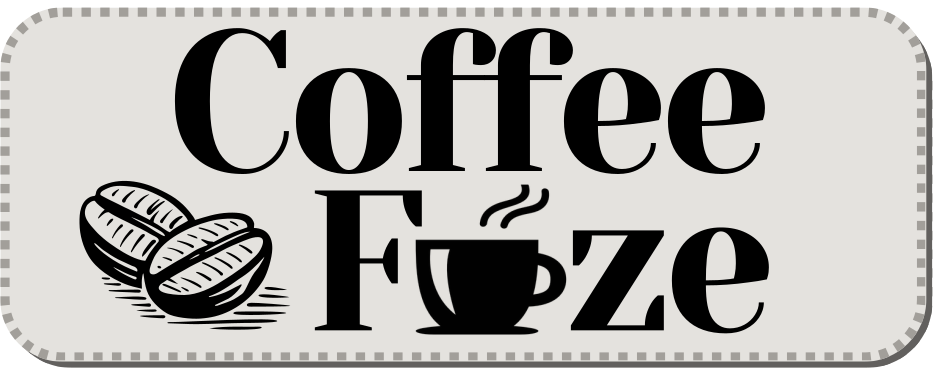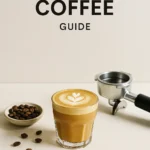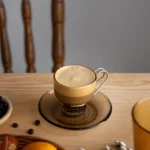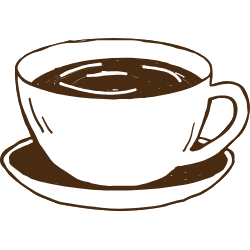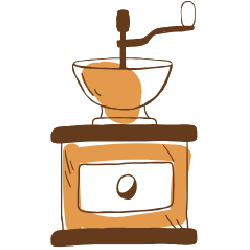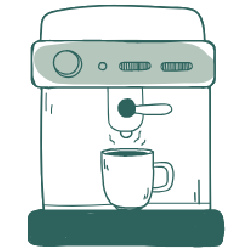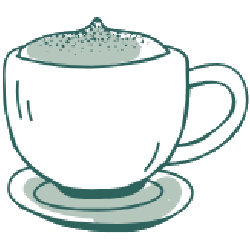If you love coffee, you’ve probably heard of, or even regularly enjoy, drip coffee. It’s easily one of the most popular and accessible ways to brew a fantastic cup, known for its balanced and smooth characteristics. Maybe you’re curious about what exactly makes it so special, or how you can get the best out of your daily brew? Well, you’ve come to the right place! We’re going to walk you through everything there is to know about this popular brewing method—from how it works and the gear you’ll need to its unique flavor profile and some expert tips for making a truly delicious cup right at home. By the time you finish this guide, you’ll be ready to master your own perfect brew, making sure every morning starts off just right.
What is drip coffee and how does it work?
Drip coffee—sometimes called filter coffee—is essentially a brewing method where hot water flows over ground coffee beans held in a filter. Just picture it: the hot water gently pulls out all those wonderful flavors and compounds from the coffee grounds as it slowly trickles down, collecting in a carafe underneath. The result? A clean, smooth, and beautifully balanced cup of coffee.
The basic drip coffee brewing process
Brewing drip coffee is pretty straightforward, whether you’re using an automatic machine or a manual pour-over setup. Here’s a quick rundown of the steps involved:
- Preparation – First, you’ll load your freshly ground coffee into a filter, which then goes into your machine or pour-over device.
- Water heating – Next, fill the water reservoir. If you have an automatic machine, it’s got a built-in heating element that gets the water just right. For manual pour-over, you’ll just use a kettle.
- Water dispersion – The heated water then flows up to a “shower head” (in automatic brewers) or is carefully poured (with manual methods) over the coffee grounds, making sure they’re evenly saturated.
- Extraction – This is where the magic happens! As the water passes through the coffee, it soaks up all those wonderful flavors and compounds, then seeps right through the filter.
- Collection – Finally, your perfectly brewed coffee drips into a carafe or pot, ready for you to enjoy.
The distinctive flavor profile of drip coffee
Have you ever noticed how clean and refreshing a good cup of drip coffee tastes? That’s definitely part of its charm. Drip coffee is well-regarded for its delicate, lighter taste, which many describe as crisp, clean, and balanced. It usually offers a mild acidity that provides a pleasant brightness, without ever being overpowering. You’ll often find a lovely balance between subtle sweetness and controlled bitterness, creating a cup that’s incredibly smooth and easy to drink.
Depending on the beans you use, the aroma alone might offer layered hints of fruit, spice, or even delicate floral notes. One reason drip coffee tastes so clean and clear is the paper filter; it does a great job of removing most of the coffee oils and sediment, leaving you with a wonderfully clear cup and a well-defined taste. This clarity is a signature characteristic of drip coffee, setting it apart from methods like French press, where more oils are retained.
Drip coffee also really brings out the unique characteristics of single-origin beans, and it works beautifully with various roast levels. Lighter roasts, for instance, often highlight those bright, fruity, and floral notes, while medium to darker roasts bring out richer, bolder flavors. Yet, no matter the roast, drip coffee tends to focus on balance rather than just intensity. And when you take a sip, you’ll notice drip coffee’s texture is usually smooth and consistent—it’s neither too thin nor overly full-bodied, offering a nice middle ground for mouthfeel.
Ultimately, folks often gravitate towards drip coffee for its clean, balanced, and nuanced flavor profile, along with its moderate acidity and sweetness. It’s perfect for really appreciating the subtle qualities of high-quality coffee beans.
Essential equipment for brewing drip coffee at home
Ready to brew your own drip coffee? You’ll definitely need a few pieces of equipment. While some items are pretty standard, others depend on whether you go with an automatic or manual method.
- Coffee maker or pour-over device – This is your main brewing tool. You can go for an automatic drip coffee machine, which is fantastic for convenience and consistency, or choose a manual pour-over setup like a Hario V60 or Chemex if you want more control over the brewing process.
- Coffee filters – You’ll need filters to hold your coffee grounds and let the brewed coffee drip through. Paper filters are super common and disposable, but you can also find reusable metal filters that tend to produce a bolder cup.
- Freshly roasted coffee beans – The quality and freshness of your beans make a huge difference in flavor. For the best results, grind your beans just before brewing to keep them fresh.
- Coffee grinder – If you’re starting with whole beans (which we highly recommend!), a burr grinder is super helpful. It gives you a uniform grind size, so important for balanced extraction.
- Hot water kettle – For manual pour-over, a hand-pour kettle with a narrow spout is a real lifesaver. It helps you control the water flow precisely over the grounds, which really aids in proper extraction.
- Electronic scale – Measuring your coffee and water accurately is a game-changer. An electronic scale helps you hit that sweet spot every time, giving you consistent, great-tasting coffee.
- Coffee server or carafe – This is the vessel where your delicious brewed coffee collects. You’ll often find them made of heat-resistant glass.
- Filter holder or stand – This is a small but mighty accessory, especially for pour-over, that securely holds the filter cup during and after brewing, keeping your counter drip-free.
How to make drip coffee at home?
In a nutshell, here’s a quick overview of the essential items you’ll want to make quality drip coffee:
| Equipment | Purpose |
|---|---|
| Coffee Maker or Pour-over device | Brew coffee by dripping hot water through grounds |
| Coffee Filters | Separate grounds from brewed coffee |
| Fresh Coffee Beans | Provide flavor and aroma |
| Coffee Grinder | Grind beans to appropriate size for extraction |
| Hot Water Kettle | Heat and pour water precisely (especially manual) |
| Electronic Scale | Measure coffee and water for correct ratio |
| Coffee Server/Carafe | Collect brewed coffee |
| Filter Holder | Hold filter cup and avoid drips |
Drip coffee compared to other popular brewing methods
So, where exactly does drip coffee stand among all the coffee brewing methods out there? Let’s take a quick look at how it stacks up against some other popular options like pour-over, French press, and espresso. Each one offers a truly different experience, so understanding the distinctions can really help you pick your perfect brew.
Drip coffee vs. pour-over
When you think about drip coffee, just think convenience. Most drip machines are pretty automated, letting you brew a larger batch with very little effort. While it delivers a balanced cup, you generally have less control over how the water distributes, which sometimes means the grounds aren’t saturated quite evenly. Still, it’s usually pretty quick, and many machines even have a timer so you can wake up to fresh coffee.
Pour-over, on the other hand, is all about control. You get to precisely manage variables like water distribution and how evenly the grounds are saturated. This close attention often gives you a cleaner, lighter, and more nuanced flavor, with fantastic clarity. The paper filter really shines here, removing oils and fine particles for a pristine cup. The trade-off? Pour-over demands your full attention and a little more prep time.
Drip coffee vs. French press
French press coffee gives you a rich, full-bodied experience. Because it uses an immersion brewing method, more oils and sediment stay in your cup, which gives you a bolder flavor profile. You steep the grounds directly in water, then press them down to separate them. This can lead to a slightly grittier texture, though, than what you’d get from drip coffee. While it’s simple to prepare, you will need to factor in some steeping time.
Drip coffee vs. espresso
Espresso is a different beast entirely. It’s incredibly concentrated, really bringing out the coffee’s inherent characteristics in a big way. This method uses high pressure to force hot water through very finely ground coffee, resulting in a strong, rich shot. The best part? It’s super fast, usually brewing in under a minute. Think of it as a concentrated burst of coffee flavor, perfect as a base for lattes and cappuccinos.
Best practices and tips for brewing high-quality drip coffee
Want to make your daily drip coffee truly exceptional? These expert tips will help you maximize the flavor and consistency of your home brew:
- Use fresh, whole bean coffee – This is probably the single most impactful tip. Always choose freshly roasted whole beans, and grind them right before you brew. Grinding increases the coffee’s surface area, which causes it to lose flavor faster. Freshly ground coffee just tastes better.
- Grind size matters – Your grind size is super important. For most drip methods, a medium-fine grind is just right. If your grind is too fine, you’ll likely over-extract, making it taste bitter. Too coarse, and you’ll probably under-extract, leading to a weak, sour cup.
- Use the right water-to-coffee ratio – A good starting point is about two tablespoons of ground coffee for every six ounces of water (roughly 15 grams of coffee to 180 mL of water). For real accuracy, an electronic kitchen scale is your best friend.
- Filter selection – Opt for a good quality paper filter. Before adding your coffee grounds, give the filter a quick rinse with hot water. This helps get rid of any papery taste and preheats your brewing vessel.
- Optimal water temperature – The sweet spot for brewing temperature is between 195–205°F (90–96°C). Water that’s too hot can actually scorch the coffee, while water that’s too cool means you might under-extract the flavors.
- Implement “the bloom” – If your brewer allows for it, or if you’re doing manual pour-over, try “the bloom.” Pour a small amount of hot water (roughly double the weight of your coffee) over the grounds and let it sit for 20–30 seconds. This lets gases escape, which helps ensure a more even and thorough extraction.
- Pour slowly and evenly (for manual drip) – For manual pour-over, after the bloom, keep pouring the remaining water slowly and evenly over the grounds in a circular motion. This helps maintain consistent extraction and stops “channeling,” which is when water rushes through one spot, leaving other grounds untouched.
- Drink freshly brewed coffee – Coffee is at its best flavor and aroma right after brewing. Try to enjoy your cup as soon as it’s ready.
- Regularly clean and maintain equipment – Make sure you clean your coffee maker, filters, and grinder regularly. If coffee oils and residue build up, it can really mess with the taste of your next brew.
Conclusion
So, there you have it—drip coffee really is a fantastic brewing method. It blends convenience with the ability to produce a consistently smooth and balanced cup. It’s super versatile and a perfect choice for your everyday coffee ritual. By keeping these tips in mind, you can truly take your home brewing up a notch and unlock the full potential of your favorite beans. Ready to brew your perfect cup?
